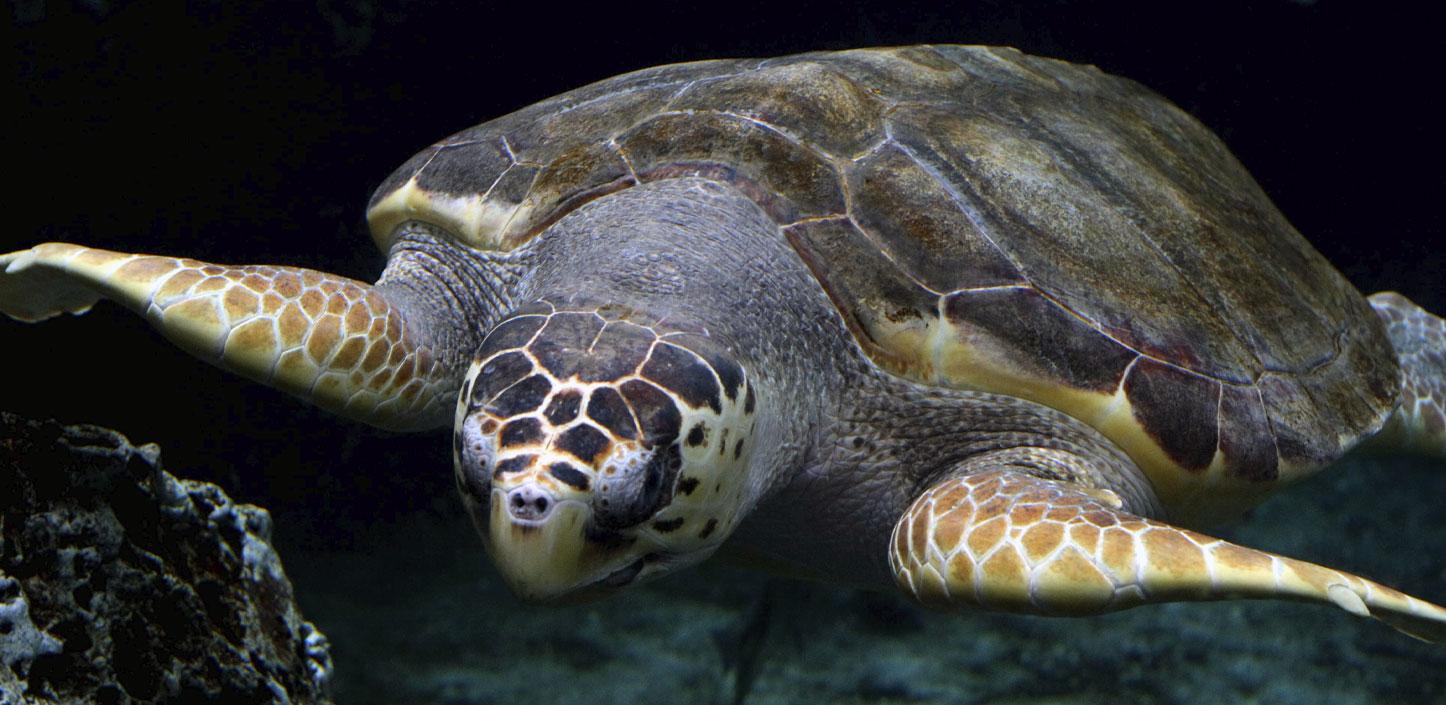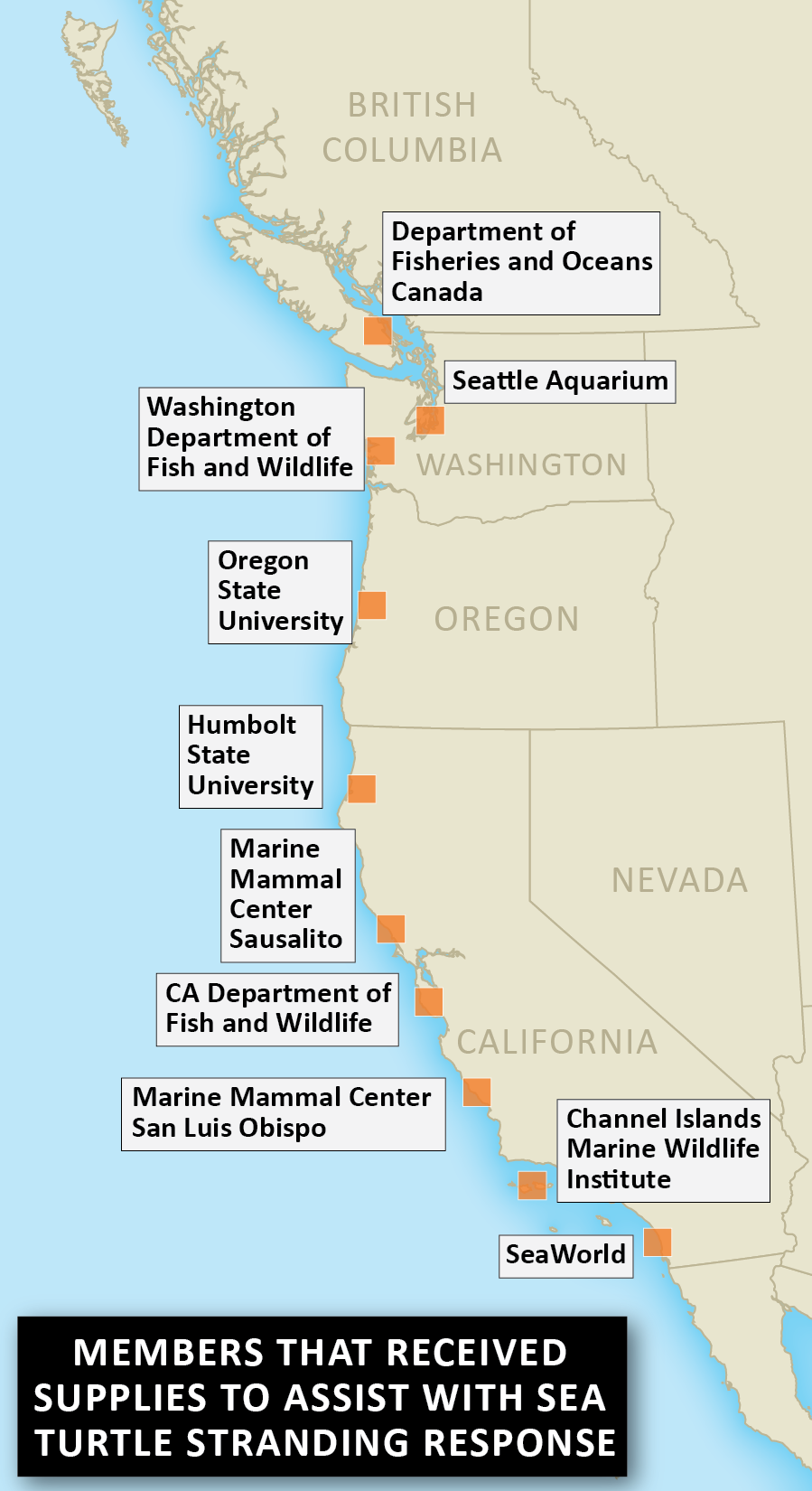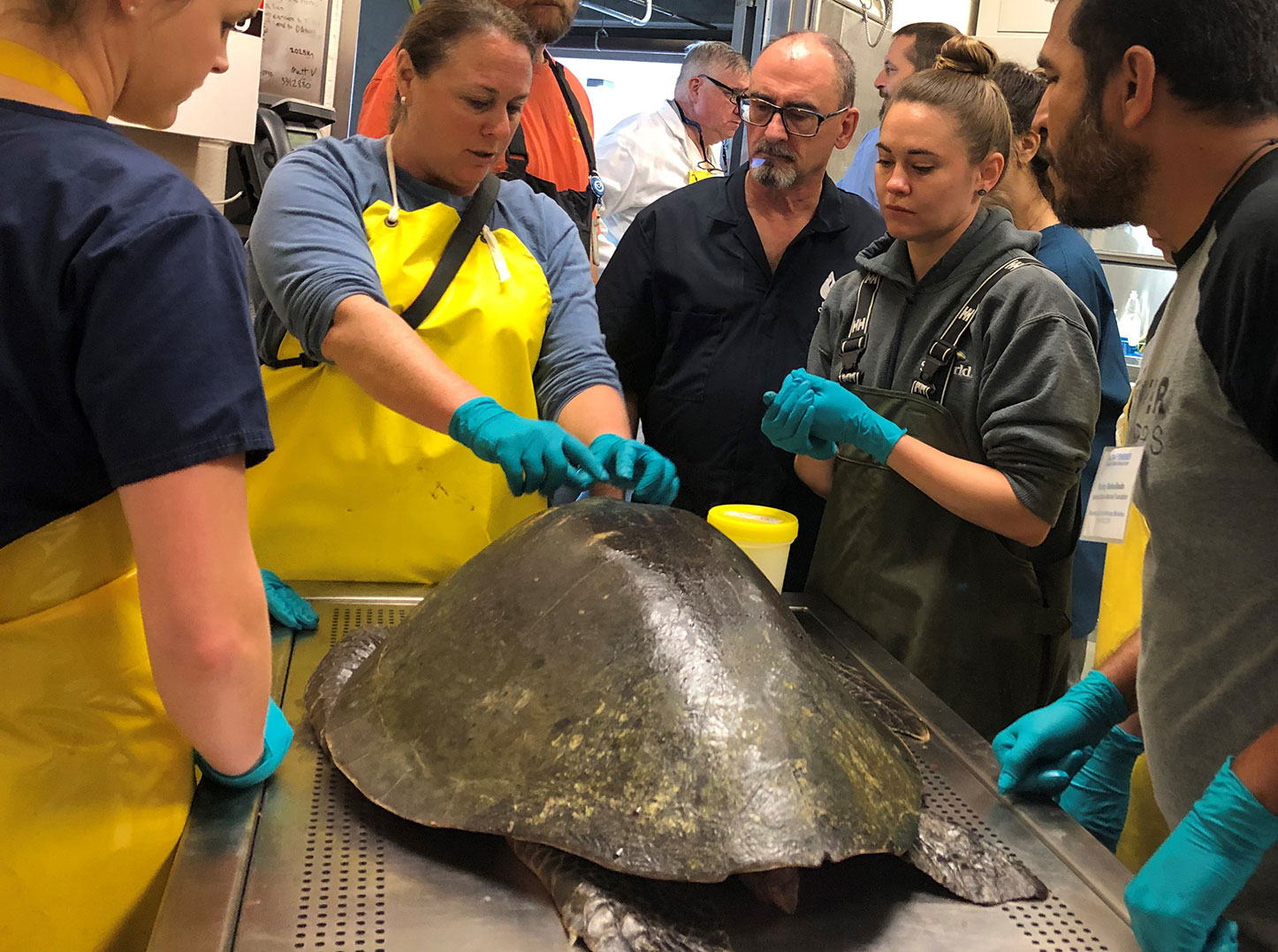
Ocean Health Initiative Sea Turtle Stranding Network
Project Highlight
Download a PDF version of this report here.
Background
SeaWorld’s Ocean Health Initiative, administered through NFWF, helped establish a network to respond to five threatened and endangered sea turtle populations that migrate along the West Coast: Western Pacific leatherback, Eastern Pacific green, North Pacific loggerhead, Pacific olive ridley, and Eastern Pacific hawksbill.
 Sea turtle stranding patterns can provide a real-time indicator of changing ocean conditions and human-based threats and the impact to these populations. As nesting populations of sea turtles grow in the eastern Pacific, a rise in strandings along the West Coast is anticipated and response teams need to be in place. Priority issues for the West Coast region include sea turtle cold stunning events–when turtles become unable to swim if they encounter unusually rapid changes to cold water–in the northern region, and propeller injuries from recreational boaters in the south. Support to the Channel Islands Cetacean Research Unit brought together federal, state, university, and nonprofit project partners from across the region to provide cooperative sea turtle response to respond to these threats from California to Canada.
Sea turtle stranding patterns can provide a real-time indicator of changing ocean conditions and human-based threats and the impact to these populations. As nesting populations of sea turtles grow in the eastern Pacific, a rise in strandings along the West Coast is anticipated and response teams need to be in place. Priority issues for the West Coast region include sea turtle cold stunning events–when turtles become unable to swim if they encounter unusually rapid changes to cold water–in the northern region, and propeller injuries from recreational boaters in the south. Support to the Channel Islands Cetacean Research Unit brought together federal, state, university, and nonprofit project partners from across the region to provide cooperative sea turtle response to respond to these threats from California to Canada.
While many groups are actively working to respond to marine mammal strandings through the West Coast Marine Mammal Stranding Network, there was no organized network to respond to threatened and endangered sea turtle populations. This project increased response efforts for stranded sea turtles through assessment of existing capacity, standardization of data and protocols, distribution of supplies, and network-wide training sessions.
Project accomplishments
- The initial capacity and expertise of the West Coast Marine Mammal Stranding Network was assessed through a comprehensive survey of participating organizations. This survey identified gaps in resources and expertise across the region and provided the baseline from which to build the sea turtle network. As follow-up to the assessment, key supplies were purchased and distributed to network organizations across the range to enhance sea turtle response efforts.
- A team was established with NOAA project partners to review and revise existing sea turtle stranding documents from the West Coast to streamline and standardize data collection across the region. Cold stunning was identified as a growing concern for sea turtles, with currently no defined criteria for classification of this threat in this region. A 10-year case review was conducted to assess cold stunning classification and to prepare a regional case definition so trends in this threat can be monitored over time.

Learning to evaluate sea turtle body condition at NOAA Southwest Fisheries Science Center | Credit: Jennifer Levine - Two network-wide training sessions were organized to increase skills with live sea turtle response, safe handling, transport, stabilization, and advanced necropsy techniques. These workshops were held at the north and south ends of the network range and included international partners from Canada and Mexico. Network members learned species identification, safe handling techniques, transportation considerations, animal monitoring, and initial stabilization guidelines. More intensive training was also provided to those with veterinary training on stranding trends, necropsy documentation and sampling, anatomy and dissection techniques, common diseases, and trauma from human interaction.